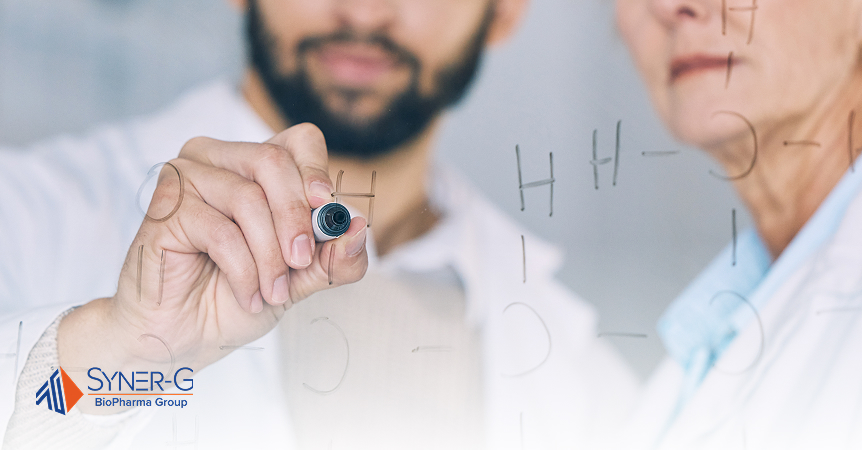The journey from a drug molecule entering the body to producing a therapeutic effect represents one of the most fascinating processes in modern medicine. At the heart of this transformation lies pharmacodynamics—the study of how drugs interact with biological systems to produce their effects.
For biopharmaceutical companies developing life-saving therapies, understanding the concept of pharmacodynamics is crucial to creating more effective and safer medications for patients worldwide.

The Molecular Foundation of Drug Action
Pharmacodynamics examines the relationship between drug concentration and the resulting pharmacologic response. Unlike pharmacokinetics, which focuses on what the body does to a drug, pharmacodynamics investigates what drugs do to the body. This distinction becomes crucial when drug developers seek to optimize therapeutic outcomes while minimizing drug toxicity.
The foundation of pharmacodynamic action rests on drug receptor interactions. When an active drug reaches its target tissue, it must bind to specific receptor sites to initiate its therapeutic effect. These tissue receptors located throughout the body’s systems serve as molecular switches, translating drug binding into subsequent biological responses. The specificity of this receptor binding process determines not only the drug’s efficacy but also its safety profile.
G protein-coupled receptors represent one of the most important classes of drug targets in modern therapeutics. These sophisticated molecular machines amplify the initial drug binding event into cascading cellular responses that ultimately manifest as clinical outcomes. The pharmacologic response depends heavily on how effectively a drug can activate or block these receptor systems.
Related Article: Why are Biologic Drugs Different?
Concentration-Response Relationships: The Dose Makes the Medicine
The dose-response relationship forms the cornerstone of rational drug therapy. This fundamental principle describes how increasing drug dose correlates with enhanced pharmacologic response, up to a maximum response plateau. The dose response curve provides drug developers with critical insights into optimal dosing strategies and helps identify the therapeutic window where benefits outweigh risks.
Several factors influence how the same drug produces different effects across patients. Drug concentration at the receptor site influences the magnitude of response, but the relationship is rarely linear. A potent drug requires lower concentrations to achieve the same therapeutic effect compared to less potent alternatives, though potency should not be confused with clinical efficacy.
Patient factors significantly impact pharmacodynamic responses. Age, genetic makeup, disease state, and concurrent medications all modify how drugs affect individual patients. For instance, patients with renal impairment may experience altered drug effects due to changes in blood concentration over time, even when pharmacokinetics and pharmacodynamics parameters appear normal in healthy subjects.

Complex Mechanisms Beyond Simple Binding
Modern drug action extends far beyond simple lock-and-key receptor binding models. Chronic exposure to certain drugs can decrease receptor sensitivity, a phenomenon known as tolerance or desensitization. Conversely, some medications can change receptor binding characteristics through allosteric modulation, where drugs bind to sites distinct from the primary receptor site.
Drug interactions add another layer of complexity to pharmacodynamic responses. When multiple medications target the same receptor or interfere with each other’s binding, the resulting effects may be additive, synergistic, or antagonistic. This complexity explains why many drugs require careful monitoring when used in combination, particularly in patients with chronic disease who often require multiple therapies.
The concept of receptor activation varies significantly among drug classes. Full agonists produce maximal receptor stimulation, while partial agonist compounds provide ceiling effects that may offer safety advantages in certain clinical situations. Bound receptors undergo conformational changes that trigger intracellular signaling cascades, ultimately leading to the observed pharmacologic response.
From Cellular Events to Clinical Outcomes
The translation from molecular drug action to clinical benefit involves multiple levels of biological organization. Drugs that successfully cross the blood-brain barrier can produce central nervous system effects, while those restricted to systemic circulation primarily affect peripheral tissues. The location of tissue receptors determines where drugs produce their primary effects and helps predict potential adverse effects.
Clinical pharmacology studies have revealed that the same dose of medication can produce vastly different responses across patient populations. Genetic mutations affecting drug metabolism enzymes or receptor structure can dramatically alter individual responses to drug therapy. This variability has prompted increased interest in personalized medicine approaches that tailor treatments based on patient-specific factors.
Clinical trials increasingly incorporate pharmacodynamic endpoints to better understand drug action mechanisms. Biomarkers that reflect receptor activation or downstream signaling provide valuable insights into optimal dosing and help identify patients most likely to benefit from specific therapies. These advances in clinical significance assessment help optimize therapeutic index calculations and improve overall treatment outcomes.

Managing Complexity in Drug Development
Understanding how drugs act at the molecular level guides rational drug design and development strategies. Drug developers must consider multiple factors when creating new therapies, including how chronic exposure might affect long-term efficacy and safety. The maximal effect achievable with any given compound depends not only on its intrinsic activity but also on the density and distribution of target receptors.
Receptor theory continues to evolve as researchers discover new mechanisms of drug action. Traditional models of competitive and non-competitive inhibition have expanded to include concepts like biased signaling, where different drugs acting on the same receptor can activate distinct downstream pathways. This mechanistic understanding opens new possibilities for developing more selective therapies with improved therapeutic profiles.
The relationship between drug concentration and effect becomes particularly important when considering drug safety. Bone marrow suppression, blood pressure changes, and other serious adverse effects often occur at higher concentrations, emphasizing the importance of maintaining drug levels within the therapeutic window. Modern dosing strategies increasingly rely on pharmacodynamic modeling to predict optimal treatment regimens.
Future Directions in Pharmacodynamic Science
As biopharmaceutical companies continue advancing drug development programs, pharmacodynamic understanding becomes increasingly sophisticated. Integration of systems biology approaches with traditional receptor binding studies provides comprehensive insights into how drugs produce their therapeutic effects. This knowledge proves invaluable for predicting drug response patterns and optimizing treatment strategies for complex disease states.
The evolution of pharmacodynamic science continues to transform how we approach drug therapy, moving beyond simple dose-response relationships toward personalized treatment strategies that account for individual patient characteristics and disease-specific factors. For biopharmaceutical companies, mastering these principles represents the foundation for developing the next generation of life-changing therapeutics.

